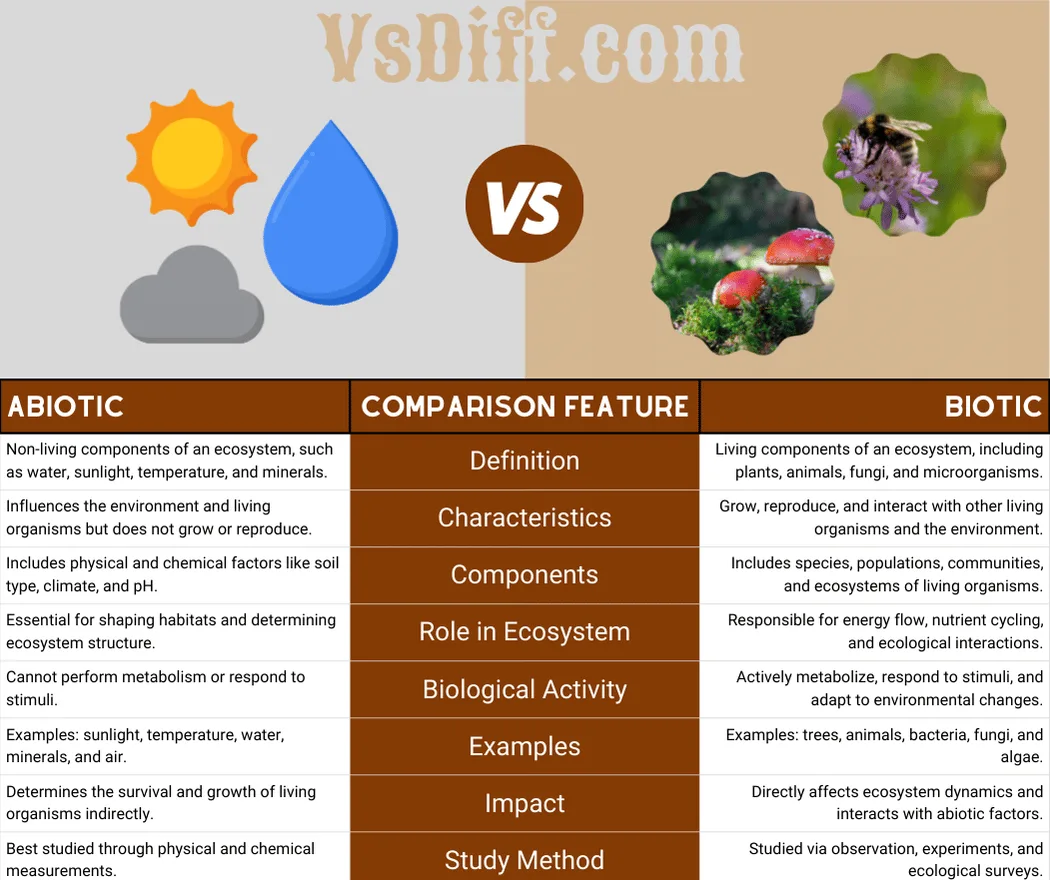
In every ecosystem, living and non-living elements work together to maintain balance. Abiotic factors, including sunlight, water, soil, and minerals, shape the environment, while biotic factors, such as plants, animals, and microorganisms, drive energy flow and nutrient cycling. Grasping the differences between abiotic and biotic components is essential for studying ecology and environmental science.
What Are Abiotic Factors?
Abiotic factors are the non-living parts of an ecosystem that influence living organisms. They include physical and chemical components such as temperature, sunlight, water, air, and soil composition. While abiotic factors cannot grow or reproduce, they set the stage for the types of organisms that can thrive in an ecosystem.
What Are Biotic Factors?
Biotic factors refer to all living components of an ecosystem. This includes plants, animals, fungi, and microorganisms. Biotic factors interact with each other and with abiotic elements, playing a critical role in energy transfer, nutrient cycling, and maintaining ecosystem stability.
Learn More Through Video
Abiotic vs Biotic: Detailed Comparison
| Abiotic | Feature | Biotic |
|---|---|---|
| Non-living components such as water, sunlight, temperature, and minerals. | Definition | Living components including plants, animals, fungi, and microorganisms. |
| Influences environment and organisms but does not grow or reproduce. | Characteristics | Can grow, reproduce, and interact with other organisms and environment. |
| Includes physical and chemical factors like soil type, climate, and pH. | Components | Includes species, populations, communities, and ecosystems of living organisms. |
| Shapes habitats and determines ecosystem structure. | Role in Ecosystem | Responsible for energy flow, nutrient cycling, and ecological interactions. |
| Cannot perform metabolism or respond to stimuli. | Biological Activity | Actively metabolize, respond to stimuli, and adapt to environmental changes. |
| Examples: sunlight, temperature, water, minerals, and air. | Examples | Examples: trees, animals, bacteria, fungi, and algae. |
| Determines the survival and growth of living organisms indirectly. | Impact | Directly affects ecosystem dynamics and interacts with abiotic factors. |
| Best studied through physical and chemical measurements. | Study Method | Studied via observation, experiments, and ecological surveys. |